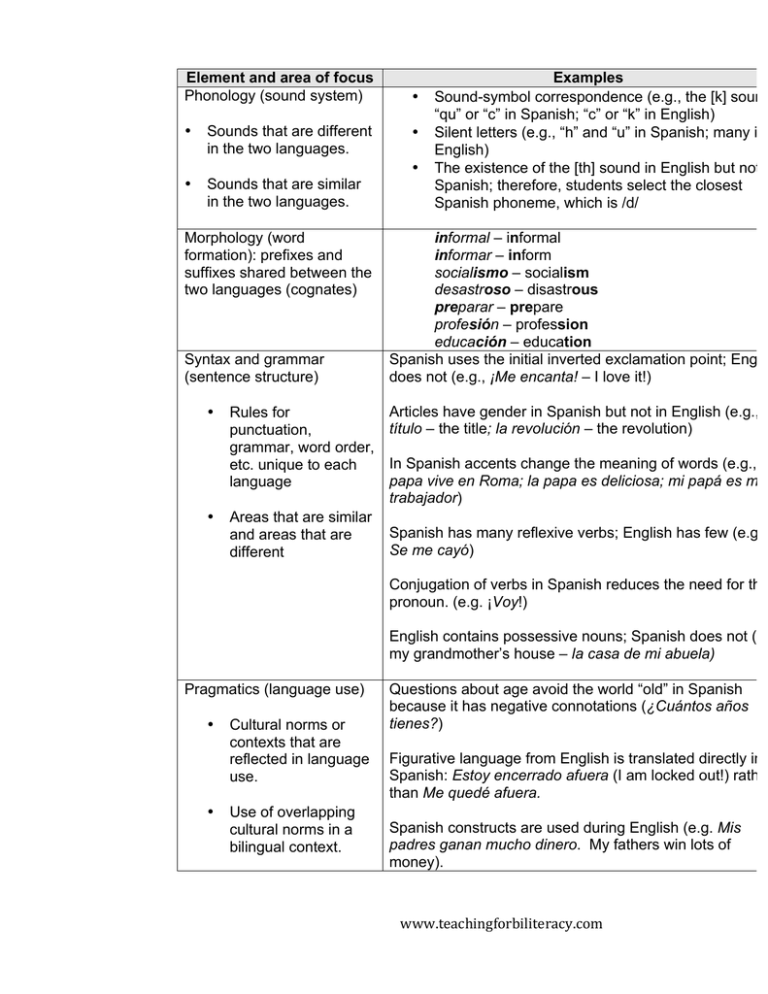www.teachingforbiliteracy.com Element and area of focus Examples
Anuncio

Element and area of focus Phonology (sound system) • Sounds that are different in the two languages. • Sounds that are similar in the two languages. Morphology (word formation): prefixes and suffixes shared between the two languages (cognates) Syntax and grammar (sentence structure) • • Rules for punctuation, grammar, word order, etc. unique to each language Areas that are similar and areas that are different • • • Examples Sound-symbol correspondence (e.g., the [k] sound “qu” or “c” in Spanish; “c” or “k” in English) Silent letters (e.g., “h” and “u” in Spanish; many in English) The existence of the [th] sound in English but not in Spanish; therefore, students select the closest Spanish phoneme, which is /d/ informal – informal informar – inform socialismo – socialism desastroso – disastrous preparar – prepare profesión – profession educación – education Spanish uses the initial inverted exclamation point; Englis does not (e.g., ¡Me encanta! – I love it!) Articles have gender in Spanish but not in English (e.g., e título – the title; la revolución – the revolution) In Spanish accents change the meaning of words (e.g., e papa vive en Roma; la papa es deliciosa; mi papá es muy trabajador) Spanish has many reflexive verbs; English has few (e.g., Se me cayó) Conjugation of verbs in Spanish reduces the need for the pronoun. (e.g. ¡Voy!) English contains possessive nouns; Spanish does not (e. my grandmother’s house – la casa de mi abuela) Pragmatics (language use) • • Cultural norms or contexts that are reflected in language use. Use of overlapping cultural norms in a bilingual context. Questions about age avoid the world “old” in Spanish because it has negative connotations (¿Cuántos años tienes?) Figurative language from English is translated directly into Spanish: Estoy encerrado afuera (I am locked out!) rather than Me quedé afuera. Spanish constructs are used during English (e.g. Mis padres ganan mucho dinero. My fathers win lots of money). www.teachingforbiliteracy.com The Bridge is The instructional moment when the teacher brings the students’ languages together to guide students in transferring knowledge and comparing and contrasting their languages. The Bridge is… The Bridge is not.. interactive and student-centered. a list of words provided by the teacher the opportunity to put new labels on learned concepts. translation. a planned third linguistic space where Spanish and English are brought together for the contrastive analysis of languages Flip-flopping, concurrent translation, or haphazard flexible, and can be adapted to a variety of program models a packaged program the beginning of English literacy instruction the entirety of English literacy instruction www.teachingforbiliteracy.com 21
